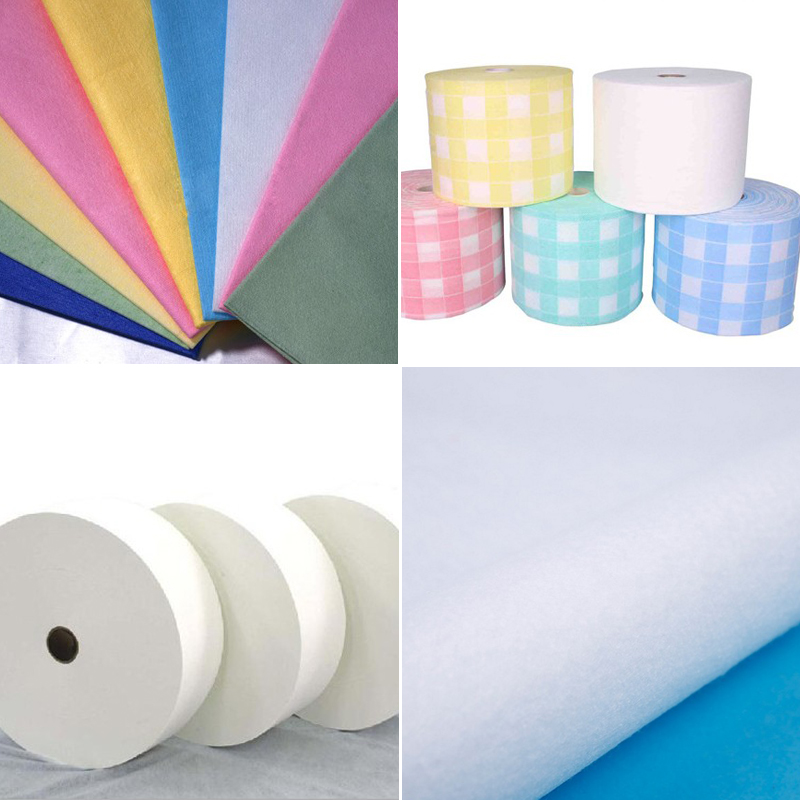Pëlhurë jo e endur Spunlacehyrje
Teknika më e vjetër për konsolidimin e fibrave në një rrjetë është lidhja mekanike, e cila ngatërron fijet për t'i dhënë forcë rrjetës.
Nën lidhjen mekanike, dy metodat më të përdorura janë shpimi me gjilpërë dhe tjerrëja.
Spunlacing përdor avionë uji me shpejtësi të lartë për të goditur një rrjetë në mënyrë që fijet të lidhen me njëra-tjetrën. Si rezultat, pëlhurat jo të endura të bëra me këtë metodë kanë veti specifike, si dorezë e butë dhe mbështjellje.
Japonia është prodhuesi kryesor i materialeve jo të endura të ngatërruara në botë. Prodhimi i pëlhurave të thurura që përmbajnë pambuk ishte 3700 tonë metrikë dhe ende mund të shihet një rritje e konsiderueshme në prodhim.
Që nga vitet 1990, teknologjia është bërë më efikase dhe më e përballueshme për më shumë prodhues. Shumica e pëlhurave të ngatërruara me hidrogjen kanë përfshirë rrjeta të shtruara të thata (rrjeta të gërshetuara ose të shtruara me ajër si pararendës).
Ky trend ka ndryshuar shumë kohët e fundit me një rritje të rrjetave pararendëse të lagura. Kjo për shkak se Dexter përdor teknologjinë e Unicharm për të bërë pëlhura të dredhura duke përdorur pëlhura të shtruara me lagështi si pararendës.
Deri më tani, ka shumë terma të ndryshëm specifikë për të pa endura të lidhura me dredha si p.sh. i ngatërruar me avion, i ngatërruar me ujë dhe me gjilpërë hidrongatërruese ose hidraulike. Termi, spunlace, përdoret më gjerësisht në industrinë jo të endura.
Në fakt, procesi i spunlace mund të përkufizohet si: procesi i spunlace është një sistem prodhimi i materialeve jo të endura që përdor rryma uji për të ngatërruar fibrat dhe në këtë mënyrë për të siguruar integritetin e pëlhurës. Butësia, pëlhura, përshtatshmëria dhe forca relativisht e lartë janë karakteristikat kryesore që e bëjnë të pa endura spunlace unike midis materialeve jo të endura.
Rrotulla prej pëlhure jo të endura
Pëlhura jo të endura Spunlace Zgjedhja e fibrave
Fibra e përdorur në materialet jo të endura të dredhura duhet të mendojë për karakteristikat e mëposhtme të fibrave.
Moduli:Fijet me modul të ulët përkuljeje kërkojnë më pak energji ngatërrimi sesa ato me modul të lartë përkuljeje.
Përsosmëria:Për një lloj të caktuar polimeri, fibrat me diametër më të madh janë më të vështira për t'u ngatërruar sesa fijet me diametër më të vogël për shkak të ngurtësisë së tyre më të madhe në përkulje.
Për PET, 1,25 deri në 1,5 mohues duket se janë optimale.
Seksion kryq:Për një lloj polimeri të caktuar dhe mohues fije, një fibër në formë trekëndore do të ketë 1.4 herë ngurtësinë e përkuljes së një fije të rrumbullakët.
Një fibër jashtëzakonisht e sheshtë, ovale ose eliptike mund të ketë vetëm 0,1 herë ngurtësinë e përkuljes së një fije të rrumbullakët.
Gjatësia:Fijet më të shkurtra janë më të lëvizshme dhe prodhojnë më shumë pika ndërthurjeje sesa fijet më të gjata. Forca e pëlhurës, megjithatë, është proporcionale me gjatësinë e fibrës;
Prandaj, gjatësia e fibrës duhet të zgjidhet për të dhënë ekuilibrin më të mirë midis numrit të pikave të ngatërrimit dhe forcës së pëlhurës. Për PET, gjatësia e fibrave nga 1.8 në 2.4 duket të jetë më e mira.
Crimpe:Crimp kërkohet në sistemet e përpunimit të fibrave bazë dhe kontribuon nëpjesa më e madhe e pëlhurës. Mbërthimi i tepërt mund të rezultojë në forcë dhe ngatërrim më të ulët të pëlhurës.
Lagshmëria e fibrave:Fijet hidrofile ngatërrohen më lehtë se fibrat hidrofobe për shkak të forcave më të larta të tërheqjes.
Përmbajtja e transferuar nga: leouwant
furnizuesit e pëlhurave jo të endura spunlace
Jinhaocheng Nonwoven Co., Ltd. është një prodhues kinez i specializuar në prodhimin e materialeve jo të endura me thurje. Të interesuar për fabrikën tonë, ju lutem na kontaktoni.
Koha e postimit: Mar-28-2019

